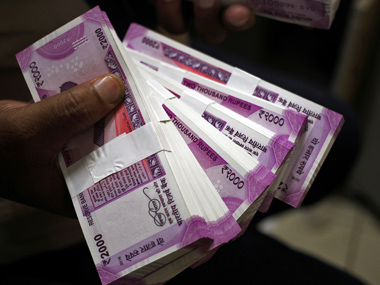Default rates among borrowers taking multiple loans from multiple Micro, Small and Medium Enterprise (MSME) lenders within a period of 60 days have increased from 2.5 percent to 4.4 percent during September 2015 to September 2018 period, says a report. This implies that stacked loans by borrowers have a higher potential of turning into non-performing assets (NPAs), says a report by TransUnion CIBIL-SIDBI MSME Pulse. This phenomenon is mainly observed on loans sanctioned by non-banking financial companies (NBFCs). The study shows that 45 percent of the sanctions showing loan stacking behaviour belong to loans sanctioned by NBFCs and 23 percent of the borrowers who have taken loans from NBFCs fall in this category. [caption id=“attachment_4011743” align=“alignleft” width=“380”] Representational image. Reuters.[/caption] Cautioning MSME lenders on loan stacking behaviour, managing director and CEO at TransUnion CIBIL, Satish Pillai said, “MSME lenders must keep track and closely monitor borrowers seeking and availing loans from multiple lenders within a period of 60 days. Our study has observed a direct correlation between loan stacking behaviour and the probability of default by such borrowers." He said that the risk of default on loans taken by borrowers who have stacked their loans has increased in the last three years and therefore, lenders must establish prudent processes and policies to detect and mitigate risks arising from loan stacking behaviour. “Regular monitoring of portfolios can alert the lender and enable timely intervention to deter defaults and losses,” said Pillai. There are overall 128 lending institutions having MSME portfolio size of Rs 100 crore and above. Of these, 77 are NBFCs which together hold a market share of 17 percent on new credit sanctions during April 2018 to September 2018. The study also reveals that NBFCs are most active in the top 10 locations (basis portfolio size), where they account for 22 percent of fresh loan sanctions to the MSME segment. Sectors which are most dependent on NBFC funding include transport and logistics, real estate, education, healthcare, mining and construction. Commercial credit growth recovery continues at 13.5 percent YOY growth during the September quarter of the current fiscal, says the report. Total on-balance sheet credit exposure in India stood at Rs 105.5 lakh crore as of September 2018 of which MSME credit accounts for Rs 24.7 lakh crore, including credit to MSME entities and credit to individuals for business purposes, according to the report.
The overall gross NPA rate of commercial lending stood at 17.5 percent during September 2018 as compared to 15.5 percent during the same period the previous year.
The stock of gross NPA in commercial exposure increased by Rs 2.23 lakh crore in September quarter of 2018 over the corresponding period the previous year, said the report. Mohammad Mustafa, chairman and managing director, SIDBI, said, “Data analysis on credit cost study reveals that fresh NPA rate of the MSME segment has been 1 percent - 1.5 percent per quarter and recovery rates have been between 0.4 percent and 0.8 percent depending on type of loan and risk associated with the borrower. The industry annual credit cost in the four quarters is 1.8 percent from June 2017 to June 2018.” He said that the return on asset (ROA) of lending in the segment is estimated at 2 percent - 5 percent, which is a healthy rate of return. “MSME segment continues to be profitable for the credit industry and promises potential of growth and healthy returns,” said Mustafa.


)

)
)
)
)
)
)
)
)



